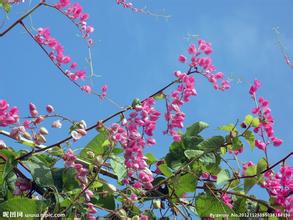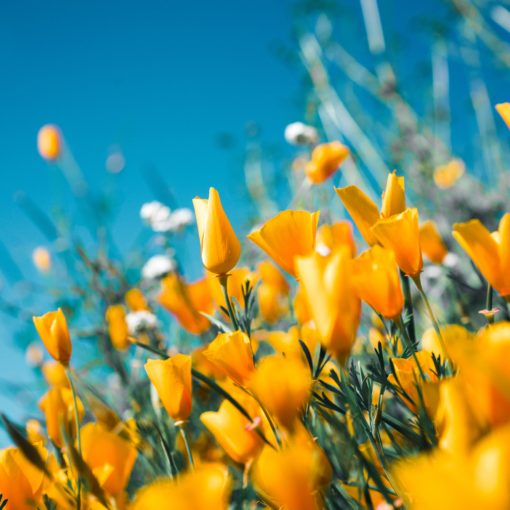The Church as the Temple of God—the Goal of God’s Eternal Economy
Message Two
The Intrinsic Significance of the Materials of the Temple (1)
Opening Word of the Prophesying Meeting
Reading the verses in each day.
Reading the main points in the outlines.
Pray-reading the verses:
The righteous man will flourish like the palm tree; he will grow like a cedar in Lebanon. Planted in the house of Jehovah, they will flourish in the courts of our God. They will still bring forth fruit in old age; they will be full of sap and green—Psa. 92:12-14.
But the olive tree said to them, Shall I leave my fatness, because of which God and men are honored by me, and go to wave over the trees?—Judg. 9:9
Word of Appetizer
Which are the different kinds of wood used in constructing the temple?
In order to become materials for God’s building, we need to experience Christ in His death (signified by cypress), Christ in His resurrection (signified by cedar), and Christ as the Spirit (signified by olive wood).
Spiritual Burden
The real Christian life for the building up of the church as the temple of God is a life of the crucified and resurrected Christ as the life-giving Spirit being built into our being so that we are being conformed to His death by the power of His resurrection to be renewed day by day and transformed from glory to glory for His glory in the church.
Concluding Word of the Prophesying Meeting
The Revelation of the Truth
In order to become materials for God’s building, we need to experience Christ in His death (signified by cypress), Christ in His resurrection (signified by cedar), and Christ as the Spirit (signified by olive wood).
Cypress signifies the crucified Christ. Cedar signifies the resurrected Christ. Olive wood signifies the transformed Christ as the life-giving Spirit.
The Experience of Life
The death, resurrection, and Spirit of Christ are one in our spirit as a living person, and this living person is the compound Spirit, the all-inclusive Spirit, as the processed and consummated Triune God for our enjoyment.
Practice and Application
If we desire to partake of the riches of Christ as the fatness, the sap, of the heavenly olive tree, we need to contact the life-giving Spirit.
In order to experience being cut off from our old manner of life and to enjoy the experience of being grafted into Christ, we need to exercise our spirit to call on His name and pray-read His Word.
Using Key Verses to Have a Bird’s-Eye View over the Whole Outline
Key Verses (1)
…And he overlaid the floor of the house with boards of cypress—1 Kings 6:15.
And two doors of cypress wood; …And he carved cherubim and palm trees and open flowerson them, and he overlaid them with gold evenly applied over the carved work—34-35.
II. Cypress Signifies the Crucified Christ
I. In order to become materials for God’s building, we need to experience Christ in His death (signified by cypress), Christ in His resurrection (signified by cedar), and Christ as the Spirit (signified by olive wood).
II. Cypress signifies the crucified Christ:
•In ancient times the Jews planted cypress trees above their graves; hence, cypress signifies Christ’s humanity in His death, the crucified Jesus.
• The doors of the temple were made of cypress wood and were carved with cherubim and palm trees; it signifies that the victory of Christ and the glory of the Lord have been “carved” into our being through sufferings.
Key Verses (2)
So he built the house and finished it, and he covered the house with beams and planks of cedar—1 Kings 6:9.
And he built the walls of the house within with cedar boards; from the floor of the house to the wall of the ceiling he covered them on the inside with wood…—15
The righteous man will flourish like the palm tree; / He will grow like a cedar in Lebanon. Planted in the house of Jehovah, / They will flourish in the courts of our God…Psa. 92:12-14.
III. Cedar signifies the resurrected Christ
•Cedar trees grew on the mountains of Lebanon; thus, cedar signifies Christ’s humanity in resurrection, the resurrected Christ.
• We need to be those who send forth our roots into Christ like the cedar trees of Lebanon, causing us to grow in life as we are planted in the house of Jehovah, flourishing in the courts of our God, still bringing forth fruit in old age, and being full of sap and green.
•Cedar signifies the resurrected Christ; we need to see the difference between our natural ability and the ability that has passed through death and resurrection.
Key Verses (3)
And for the entrance of the innermost sanctuary he made doors of olive wood; the lintel and doorposts were a fifth of the breadth of the wall—1 Kings 6:31.
..You, being a wild olive tree, were grafted in among them and became a fellow partaker of the root of fatness of the olive tree—Rom. 11:17
IV. Olive Wood Signifies the Transformed Christ as the Life-giving Spirit
• Olive oil typifies the Spirit of God; hence, olive wood signifies Christ’s humanity in the Spirit of God, who is also the compound Spirit as the anointing.
• We are the branches of Christ who have been grafted into Him as the cultivated olive tree to enjoy Him; the life-giving Spirit is the life-juice of Christ as the heavenly olive tree; we need to contact the life-giving Spirit.
•We have been grafted into Christ “contrary to nature”; contrary to nature means “contrary to the self”.
•Romans 11 reveals that we are the branches of Christ as the olive tree to bear “olives” and produce soothing oil.
Prophesying Topics—Twelve Topics per Week
D1
T1 Three kinds of wood were used in the temple: cypress, cedar, and olive wood (1 Kings 6:15, 31)
(Please explain the significances of cypress, cedar, and olive wood.)
T2 Christ in His death, Christ in His resurrection, and Christ as the Spirit (Phil. 3:10; 1:19)
(Please explain that in order to become materials for God’s building, we need to experience Christ in His death, Christ in His resurrection, and Christ as the Spirit.) (Refer to Outline I. A-B)
D2
T1 Christ comes into us for the purpose of making a home for Himself (Eph. 3:17)
(Please explain that it is not adequate simply to take God as our life and we need Christ to be built into our being.)
T2 God desires to build Himself into us (2 Sam. 7:5, 11b)
(Please explain that David wanted to build a house for God, but God stopped him and told him that He would build a house.)
D3
T1 Cedar signifies the resurrected Christ (Hosea 14:4-8)
(Please describe the picture of Israel in the restoration in Hosea 14:4-8.)
T2 In resurrection something divine has been wrought into us (Phil. 3:10)
(Please explain the reason that the natural strength and ability are useful if they are dealt with by the cross.)
D4
T1 The natural constitution pertains to human ability, capability, wisdom, and cleverness (Matt. 26:33-35)
(Why do we need to deal with the natural constitution?)
T2 Natural ability and resurrected ability (Acts 7:22; Matt. 22:32) (refer to Outline IV. D. 1-9)
(Please explain the differences between our natural ability and the ability that has passed through death and resurrection.)
D5
T1 The fatness of the olive tree is the riches of Christ (Rom. 11:17; 1 Cor. 15:45b)
(Please testify that the way for us to enjoy the riches of Christ is to call on the name of the Lord and pray-read God’s word.)
T2 We were grafted into the cultivated olive tree “contrary to nature.” (Rom. 11:24)
(Please explain that the Lord’s grafting is always contrary to our nature.)
D6
T1 The olive tree and the vine tree (Judg. 9:9, 13)
(Please explain the significances of the olive tree and the vine tree.)
T2 We are not trees but branches (John 15:5; Rom. 11:24)
(Please explain that both John 15 and Romans 11 give us one principle.)



